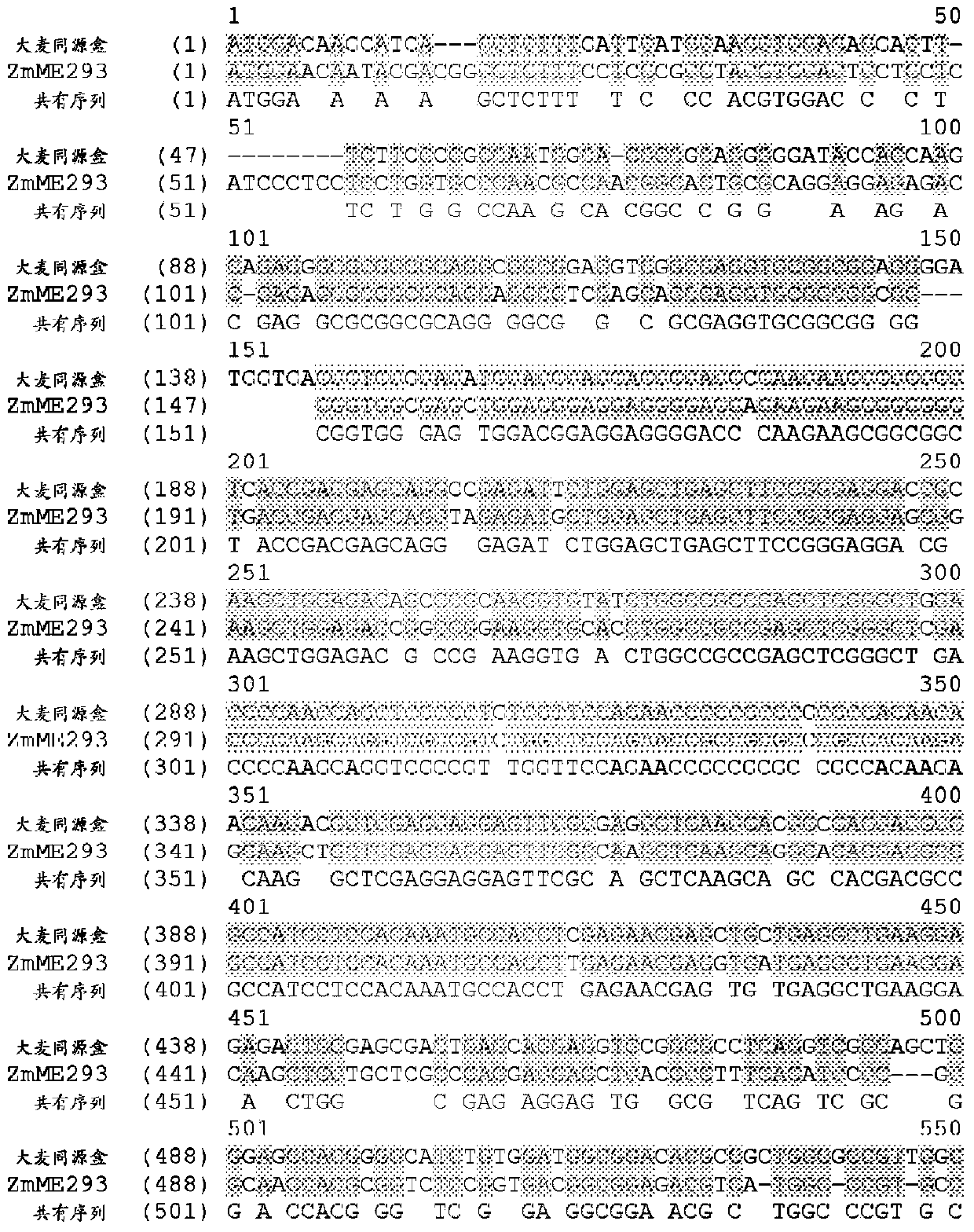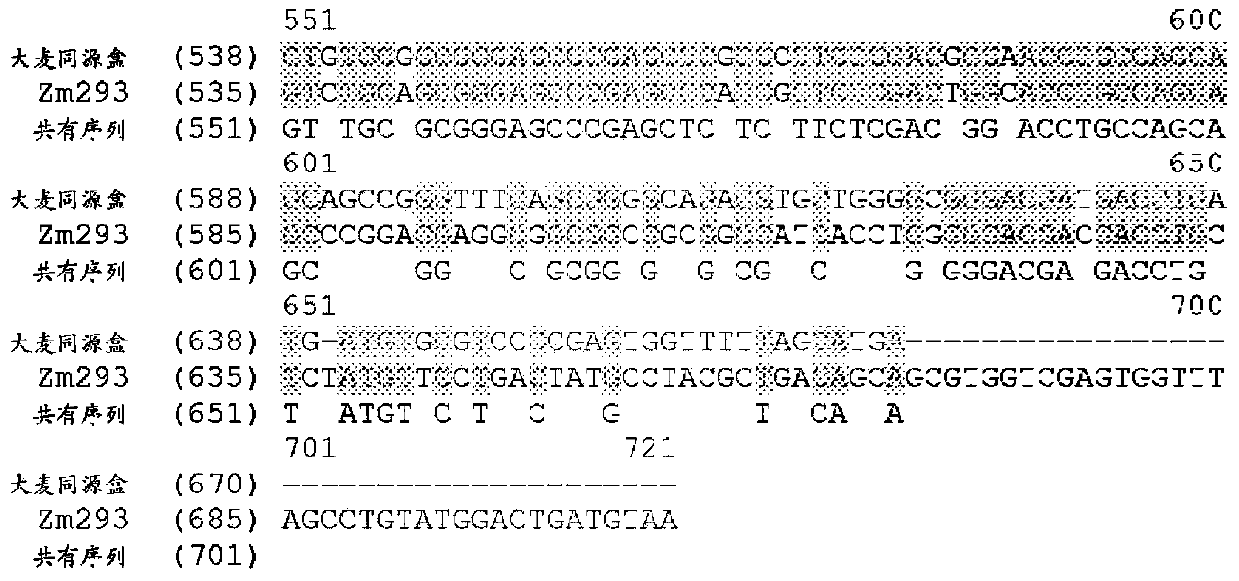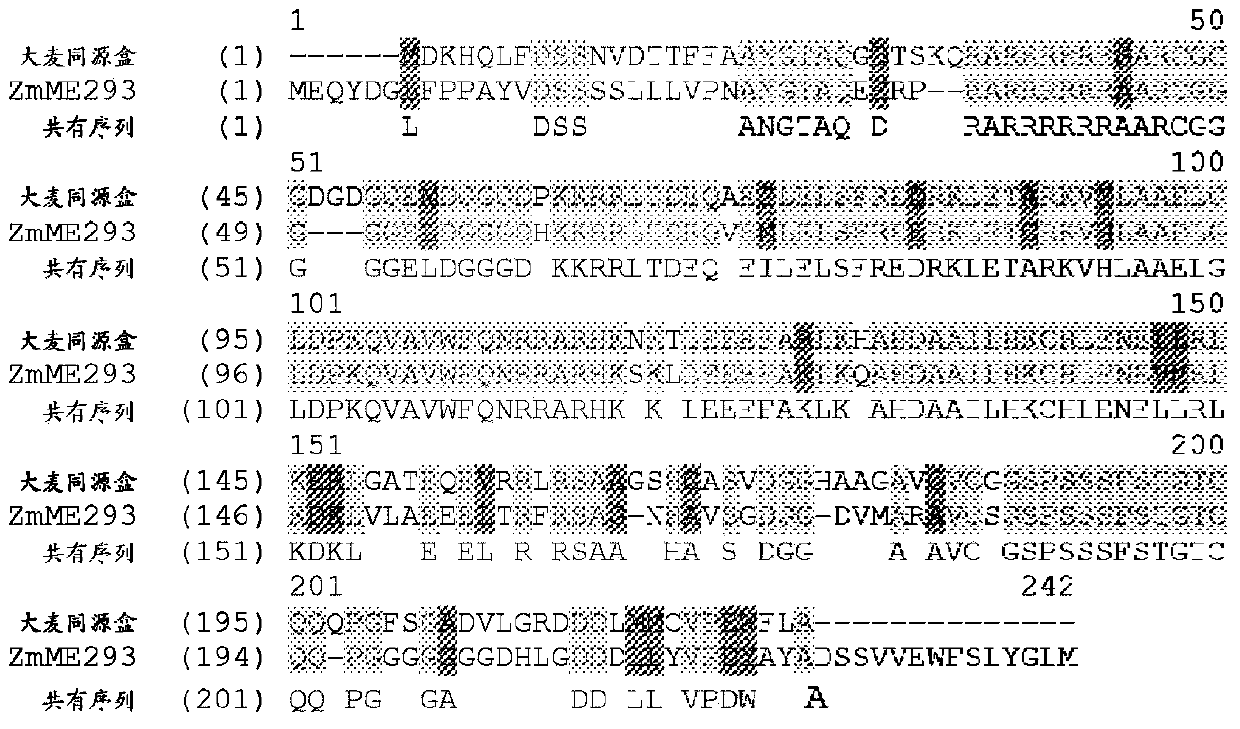Down-regulation of a homeodomain-leucine zipper i-class homeobox gene for improved plant performance
A leucine zipper, plant technology, applied in the field of molecular biology, can solve problems such as yield loss
- Summary
- Abstract
- Description
- Claims
- Application Information
AI Technical Summary
Problems solved by technology
Method used
Image
Examples
example
[0235] The following examples are offered to illustrate rather than limit the claimed subject matter. Various modifications by those skilled in the art are intended to be included within the spirit and scope of this application and the purview of the appended claims.
example 1
[0236] Example 1: Isolation of sequences from maize
[0237] To generate the sense strand of the hairpin, primers were designed as the ZmME293 primer with BamHI on the 5' end and PstI on the 3' end:
[0238] Clone 451, 5'-3' ZmME293 fragment, BamHI and PstI cleavage sites on the primer (563bp) (SEQ ID NO: 34)
[0239] Primers:
[0240] Forward (with BamHI site) (SEQ ID NO: 35)
[0241] GAGCGCAGGCGAAGGATCCAACAATACGAC
[0242] Reverse (with PstI site) (SEQ ID NO: 36)
[0243] CTCCCGCTGCAGACGGCACGGGCCATGACG
[0244] To generate the antisense strand of the hairpin, the primers were designed as ZmME293 primers with SfuI at the 5' end and AgeI at the 3' end:
[0245] Clone 515, 5'-3'ZmME293 fragment, SfuI and AgeI cleavage sites are on the primer (572bp) SEQ ID NO: 37)
[0246] Primers:
[0247] Forward (with SfuI site) (SEQ ID NO: 38)
[0248] TTCGAACGCAGGCGAAGGATGGAACAATACGAC
[0249] Reverse (with AgeI site) (SEQ ID NO: 39)
[0250] ACCG...
example 2
[0280] Example 2: Down-regulation of ZmME293 by expression of fermented RNA
[0281] As noted previously, plant cells and plants can be modified by introducing ZmME293 polynucleotide sequences programmed to effect RNA silencing or interference. This example describes hairpin RNA expression cassettes for modifying, for example, drought tolerance, NUE, seed or biomass yield, density tolerance, or other phenotypes in maize. As noted previously, downregulation of ZmME293, eg, by expression of hairpin RNA (hpRNA), can result in plants or plant cells having reduced expression (up to and including undetectable expression) of one or more ZmME293s.
[0282] One or more ZmME293 genes (such as ZmME293 promoter, other untranslated regions or coding regions) have specific expression of hpRNA molecules in plants, such as drought tolerance and density tolerance of plants can be changed by RNA interference , seed or biomass yield and / or nitrogen use efficiency phenotypes.
[0283]...
PUM
 Login to View More
Login to View More Abstract
Description
Claims
Application Information
 Login to View More
Login to View More - R&D
- Intellectual Property
- Life Sciences
- Materials
- Tech Scout
- Unparalleled Data Quality
- Higher Quality Content
- 60% Fewer Hallucinations
Browse by: Latest US Patents, China's latest patents, Technical Efficacy Thesaurus, Application Domain, Technology Topic, Popular Technical Reports.
© 2025 PatSnap. All rights reserved.Legal|Privacy policy|Modern Slavery Act Transparency Statement|Sitemap|About US| Contact US: help@patsnap.com



